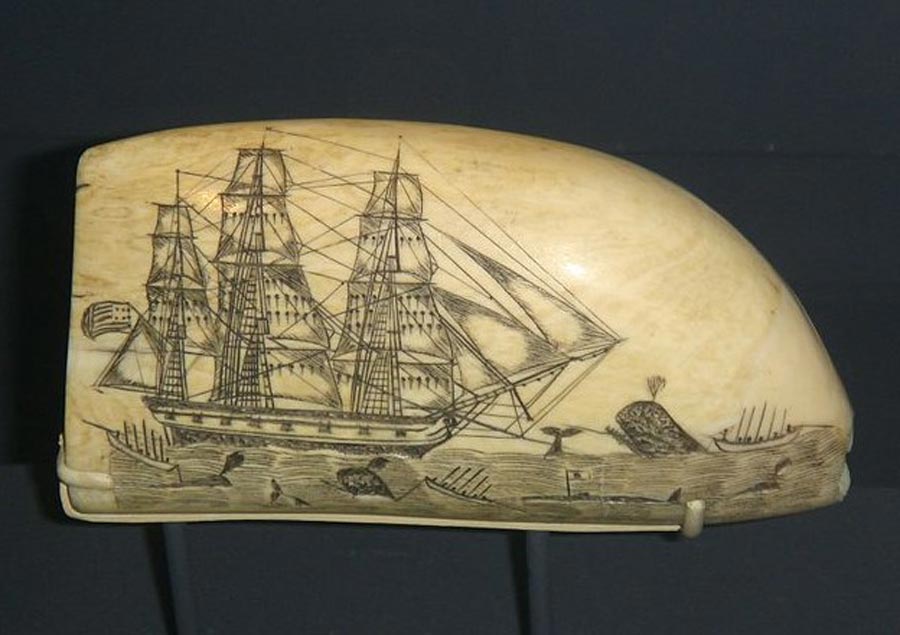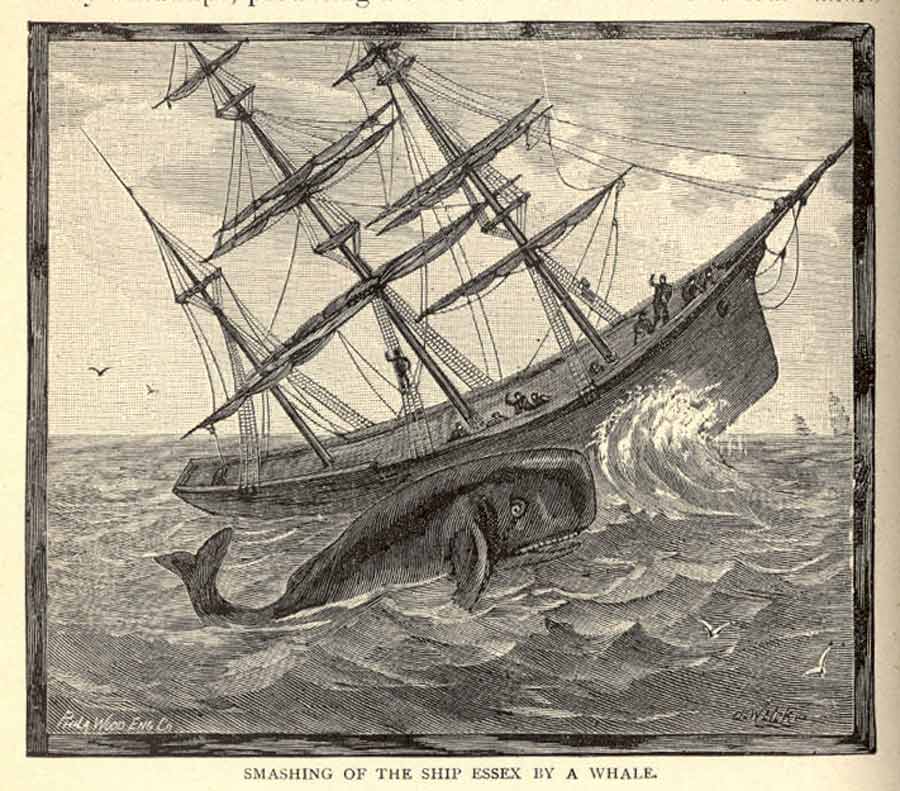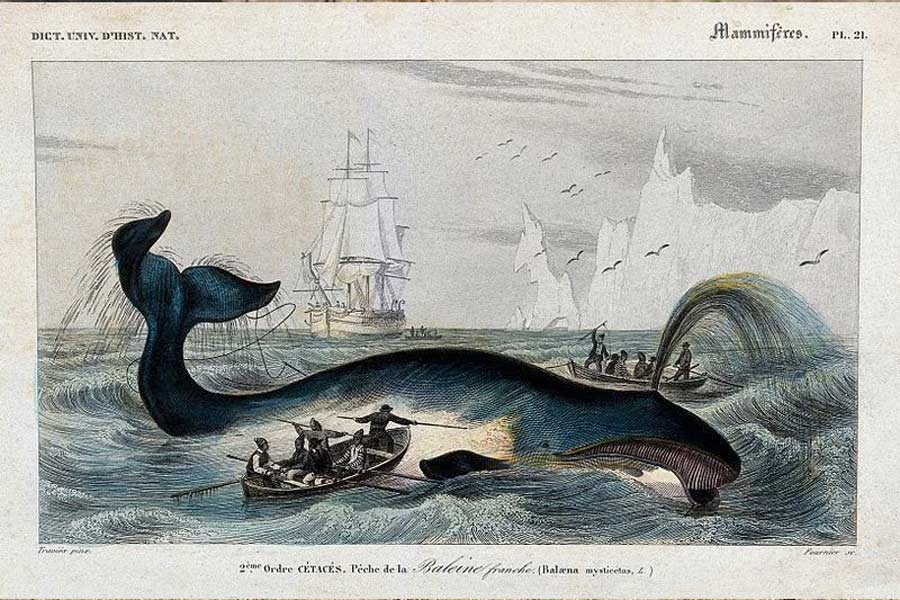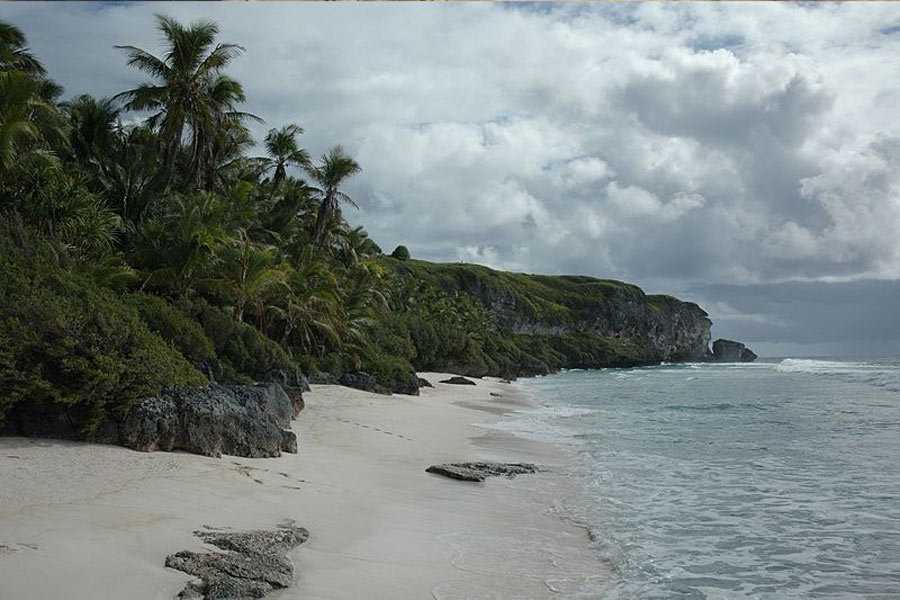Have you read the novel named Moby Dick by Herman Melville? If you have read it, you must be surely wondering whether there was real Moby Dick or not. Well, while the murderous, gigantic white whale in the novel of Melville was a fictional one, Melville drew inspiration from a number of real-life horror stories.
One of the prominent stories among them was that of the Essex, a whaleship operating in the early 19th century. The Essex actually sank due to a whale attack, providing inspiration for Melville to write his book some 20 years later.
Obviously, this was not a normal occurrence – the idea of a whale attacking a ship was as sensational and shocking to Moby Dick’s 1851 readership as the story of a giant shark attacking beachgoers in Amity Island a century later. So, what happened?
The “Lucky” Essex
The Essex was an American whaleship that was launched back in 1799. For about 20 years, all the voyages of The Essex had been successful, and often it was called a lucky vessel, popular with her crews.
The ship had been led on several successful expeditions by Captain George Pollard Jr. and Owen Chase, one of his crew. To all appearances, her 1820 expedition would be another such successful trip.
The Final Voyage
On August 12, 1819, the Essex set out on the sea from Nantucket in Massachusetts for a voyage to the west coast of South America. There were 21 crew members onboard the ship, under George Pollard Jr. as captain. The sailors of the ship included 7 African American men, 4 island natives and 9 other assorted crewmembers.

In order to hunt for the whales, the crew members were divided into groups. Each of the groups consisted of three members, led by Pollard, Chase, or another man, Matthew Joy. On sighting a whale, these teams would be lowered in whaleboats and row out to within harpoon range of the whale, where they would strike.
Just two days after the Essex started her voyage, she had to face a sudden squall that terrified the inexperienced crew onboard. The ship started to creak and nearly sank. The “topgallant” sail of the Essex was lost, and two of the whaleboats on the ship were destroyed. Another whaleboat was also damaged.
Captain Pollard opted to carry on the voyage without stopping to repair or replace the damaged whaleboats. Lucky once again, the ship reached Cape Verde Island at the end of September. There the Essex was repaired and again set off towards South America.
The crew was even successful in catching their first sperm whale near Brazil. However, as the region was fished out, they headed towards the Pacific with the hope of better luck, rounding Cape Horn in January 1820. For several months, they patrolled up and down the Chilean coastline but sighted only a few whales.
Their fate started changing after reaching the region near Peru. The crew of the Essex were able to catch a sperm whale every five days, collecting about 450 barrels of oil before rough conditions forced them west. In September 1820, one of the sailors, Henry DeWitt, left at Atacames in Ecuador, thereby reducing the number of crew members to 20 men.
Restocking at Galápagos
The ship stopped at Galápagos in October 1820 in order to stock up the provisions and repair some serious leaks that had appeared. The crewmembers collected some 300 giant turtles for their food, and then on October 22, while heading towards Charles Island, they collected more than 60 tortoises as well.

The tortoises stacked well in the ship’s hold and provided plenty of meat, weighing somewhere around 100 to 800 pounds. The sailors believed that the tortoises could survive without food and water for nearly a year, they were collected alive and left to roam around in the ship.
Not content with removing the tortoises from Charles Island, the crew managed to torch it as well. As it was a dry season, and a fire started by the shore party started burning and spreading very quickly. Soon, it went out of their control, and they had to run through flames in order to save their lives and escape.
- Taken by the Ice: What Became of the Franklin Expedition Crew?
- Ernest Shackleton – Surviving Antartica
When the crewmen had reached the safety of the Essex , they could see that the whole island was on fire. The entire crew of the Essex was upset about the fire incident, and a crewmember called Thomas Chapple later admitted to setting the fire.
A Date with Destiny
Back in open water, the crew of the Essex next spotted a sperm whale in November 1820. Captain Pollard gave an order to launch three whaling boats, which managed to successfully corral a number of whales.
During the hunt a whale calf smashed into Chase’s whaleboat, and it forced him to return to the Essex . While Chase was engaged in repairing the whaleboat that was damaged, the crew onboard the Essex spotted a huge sperm whale nearby. It was about 85 feet long and was estimated to weigh nearly 80 tons and was acting in a strange manner.
At first, the whale was motionless but then it started swimming, straight towards the Essex . The whale dived to just below the surface, increasing its speed underwater until the huge creature rammed the ship, rocking the Essex from one side to another.

On deck, Chase thought of preparing the harpoon. However, when he saw that the tail of the whale was quite close to the ship’s rudder, he realized that attempting to kill the whale would provoke it and lead to complete destruction easily. The crew members could neither move the ship forward nor leave it where it was.
Turning after the first attack, the huge whale charged the bow of the ship and crushed it, before removing its head from the timbers and retreating. The ship was crippled and, as she started to sink the crew had to quickly look for other alternatives.
Survivors of the Whale Attack
Luckily, all the 20 crew members of the Essex survived the whale attack. But the attack had stranded them far out in the Pacific Ocean, about 3,700 kilometers (2,300 miles) west of South America.
The crew spent two days recovering what supplies they could from the waterlogged ship. They were able to gather 300 pounds of biscuits, a number of casks of water, and the tortoises. However, they were aware that they had inadequate supplies to sustain them until they reached the land.
Having assessed the situation, Pollard decided to set out on the whaleboats. The Captain, Joy, and Chase took responsibility for each of their teams, and Pollard proposed the idea of heading towards the small Pacific Island of Tahiti.
According to his calculations, it would take them nearly 30 days to reach the place. However, Chase opposed the idea as he believed that the island would be full of cannibals. Chase and Joy both convinced Captain Pollard to attempt a longer journey and return to the South American coast.
Owing to the quick thinking of one of the crew during the wreck, they were able to save 2 sets of navigation tools. Chase and Captain Pollard both used one set of these navigation instruments, with Joy following their lead.

Right from the beginning of the journey, the water and food were rationed. Although most of the food items were soaked in seawater, the crew continued consuming the contaminated food for about two weeks. By that time, the water shortage had made things critical for them.
Landfall and Hope
The crew members were becoming convinced that they would soon die of thirst. But on December 20, 1820, one month after the attack, the crew reached the uninhabited Henderson Island, a completely desolate coral islet in the Pitcairn Islands, deep in the Pacific.
However, due to incorrect calculations, they thought that they had reached Ducie island, more than 200 km (124 miles) to their east. On the Henderson island, the crew of the Essex spotted a spring that provided brackish water.
In under a week, they have eaten all the seabirds present on the island, and almost all their other food resources were exhausted. On December 26, 1820, the crew realized that if they chose to stay for more time on the island, they would die out of starvation.
So, they started preparing their whaleboats in order to sail on the sea again. However, 3 men of the crew, namely, Seth Weeks, William Wright, and the man who had started the fire Thomas Chapple, chose to stay behind on the Henderson Island.

On December 27, 1820, the remaining 17 crew members set out on the seas and resumed their journey, hoping to reach Easter Island more than a thousand kilometers (621 miles) away. Within a short period of just three days, all the birds and crabs that they had collected for food were exhausted.
On January 3, 1821, the men realized that they had moved too far in the wrong direction. They decided to head towards another island, named Más a Tierra.
Death and the Sea
The men were starting to die out of hunger and thirst. The health condition of Matthew Joy worsened with time, and he wanted to rest on the boat of Captain Pollard. On January 10, 1821, Joy died, and Obed Hendricks took charge of his boat. As per custom, Joy was sewn into his own clothes and later buried in the sea.
On January 10, Chase’s whaleboat, carrying the crewmen Isaac Cole, Thomas Nickerson, Richard Peterson, and Benjamin Laurence, separated from the other whaleboats due to a squall. On January 18, 1821, Peterson, one of the oldest crew members, died, followed almost immediately by Isaac Cole. The survivors, desperate in their lack of food, resorted to cannibalism.
On January 14, 1821, Hendrick’s whaleboat that carried Lawson Thomas, Isaiah Sheppard, William Bond, Joseph West, and Charles Shorter ran out of food supplies. Captain Pollard agreed to share the remaining provisions of his boat with them.
But it was no use, and on January 21, all the food supplies were exhausted. On January 20, Thomas had died, and his body was kept for food. On January 23, Shorter died, while Sheppard and Samuel Reed, a man on Pollard’s boat, died on January 27 and 28, respectively.
On January 28, 1821, the two remaining boats were separated. Hendricks and his boat was never seen again, and it is believed that all the men on the boat must have died in the sea. By February 1, 1821, all food supplies on Pollard’s boat were exhausted and the situation was dire. In the end, only Pollard and one other man, Charles Ramsdell, remained alive on the whaleboat.
Rescue and Reunion
On February 18, 1821, 89 days after the Essex went down, a British vessel sighted Chase, Nickerson, and Lawrence and rescued them. Five days later on February 23, 1821, Ramsdell and Pollard were rescued by a Nantucket whaleship named Dauphin.
On March 17, 1821, Ramsdell and Pollard reunited with Nickerson, Chase, and Lawrence. The three crewmen of the Essex who had stayed back on the Henderson island were also saved in April 1821.
All the eight men who were saved and survived returned to the sea again within a month of coming back to Nantucket. Later, speculations were made that if the crew had followed the proposed idea of Captain Pollard and attempted to navigate to Tahiti, they might have survived.
In early 1822, Pollard was made captain of the Two Brothers, another whaleship, and returned to the sea. His luck continued to hold, surviving yet another shipwreck and finally retiring peacefully from the sea.

But the Essex stayed with him. His retirement was forced, as he became known as “Jonah” or the unlucky one. No ship owner would trust the survivor of two shipwrecks, or as someone who had provoked a sperm whale to sink his ship.
Top Image: Nantucket whalers attack a sperm whale. Ambroise Louis Garneray, 1835. Source: Daderot / Public Domain.
By Bipin Dimri